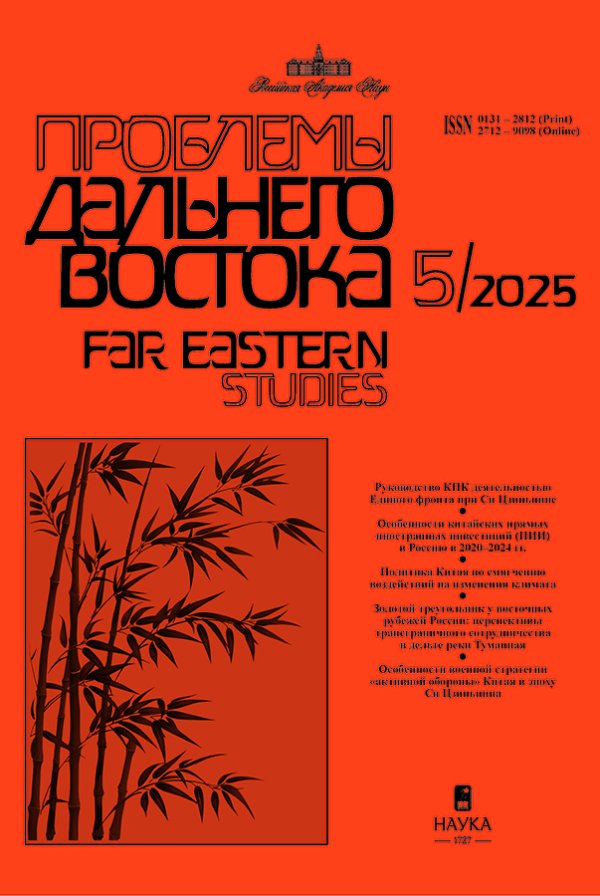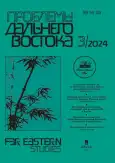Система канадзукай как буддийская эзотерическая теория языка в школе кокугаку
- Авторы: Лепехова Е.С1
-
Учреждения:
- Институт Китая и современной Азии РАН
- Выпуск: № 3 (2024)
- Страницы: 147-160
- Раздел: Культура
- URL: https://gynecology.orscience.ru/0131-2812/article/view/676327
- DOI: https://doi.org/10.31857/S0131281224030106
- ID: 676327
Цитировать
Полный текст
Аннотация
В статье рассматривается одна из версий происхождения японского языка, выдвинутая одновременно в качестве эзотерической и фонетической буддийским монахом Кэйтю: (契沖, 1640–1701), считающимся основателем национального культурно-философского движения кокугаку (國學), которое возникло в период Токугава. В своем основном труде «Манъё: дайсё:ки» (万葉代匠記), опираясь на созданный им свод орфографических правил для записи слов японского языка канадзукай (仮名遣い), Кэйтю: пытается доказать несостоятельность прежней системы Фудзивара Тэйка и одновременно раскрыть эзотерическую природу структуры речи. Согласно Кэйтю:, пятьдесят знаков японского алфавита составляют единую целостную систему, в которой все звуки ведут свое происхождение от изначального санскритского знака «А». В этом проявляется взаимозависимая связь между микрокосмом и макрокосмом, выражающаяся в звуках, которые формируют язык как инструмент общения и понимания, свидетельствующий об универсальности природы космического Будды Вайрочаны. На основании этой метонимической связи Кэйтю: делает вывод о том, что изучение структуры японского языка равнозначно познанию мира в качестве сакрального объекта и, соответственно, формирует более рациональный и открытый подход к пониманию сути классической японской литературы, что выгодно отличает его от замкнутой линейной традиции, принятой в эпоху Хэйан. Дальнейшее изучение «Манъё: дайсё:ки» представляет особый интерес для исследователей школы кокугаку, поскольку может содержать дополнительные сведения о буддийских истоках этого направления, чьи последователи, напротив, отрицали позитивное влияние буддизма на японскую культуру и предпочитали не упоминать Кэйтю: как патриарха традиции кокугаку (например, Хирата Ацутанэ). Все это может пролить свет на вклад буддийской философии в формирование традиции научного эмпиризма в Японии конца XVII в.
Ключевые слова
Об авторах
Е. С Лепехова
Институт Китая и современной Азии РАН
Автор, ответственный за переписку.
Email: lenalepekhova@yandex.ru
ORCID iD: 0000-0002-5186-6686
Доктор философских наук, ведущий научный сотрудник Центра «Государство и религия в Азии»
Москва, РоссияСписок литературы
- Завьялова О.И. Большой мир китайского языка. М: Восточная книга, 2014. 320 с.
- Кин Д. Японская литература XVII-XIX столетий / Пер. А. Долина, И. Львовой, Т. Редько. М.: Наука, 1978. 431 с.
- Конрад Н.И. Японская литература в образцах и очерках. М.: Наука, 1991. 551 с.
- Blum M.L. Shin Buddhism in the Meiji Period // Cultivating Spirituality: A Modern Shin Buddhist Anthology. Ed. by Mark. L. Blum & Robert F. Rhodes. New York: State University of New York Press, 2011. 321 р.
- Bodman R.W. Poetics and Prosody in Early Mediaeval China: A Study and Translation of Kūkai’s Bunkyō hifuron. Ph.D. dissertation, Cornell University, 1978. 464 p.
- Foulk E.J. The Jeweled Broom and the Dust of the World: Keichū, Motoori Norinaga, and Kokugaku in Early Modern Japan. PhD. Dissertation. University of California. Los Angeles, 2016. 240 p.
- Murphy R.E. Esoteric Buddhist Theories of Language in Early Kokugaku The Sōshaku of the Man’yō daishōki // Japanese Journal of Religious Studies. 2009. No. 36. Vol. 1. Рp. 65–91.
- 契沖全集 [Собрание сочинений Кэйтю] // 久松 潜一, 築島裕. 東京: 岩波商店, 1973. Vol. 1. 664 р.
- 西村玲: 教学の進展と 仏教改革運動 [Нисимура Рё. Развитие конфуцианства и буддистское реформистское движение] // 民衆仏教の定着. 東京: 佼成出版社, 2010. 464 р.
- 上田霊城: 浄厳和尚伝記史料集 [Уэда Рэйдзё. Собрание биографических документов настоятеля Дзёгона]. 東京:名著出版, 1979. 382 р.
- 久松潜一: 契沖伝 [Хисамацу Сэнъити. Предания о Кэйтю]. 東京: 有精堂, 1969. 556 p.
- 山田孝雄: 五十音図の歴史 [Ямада Ёсио. История системы годзюон]. 東京: 宝文館1951. 244 p.
Дополнительные файлы








